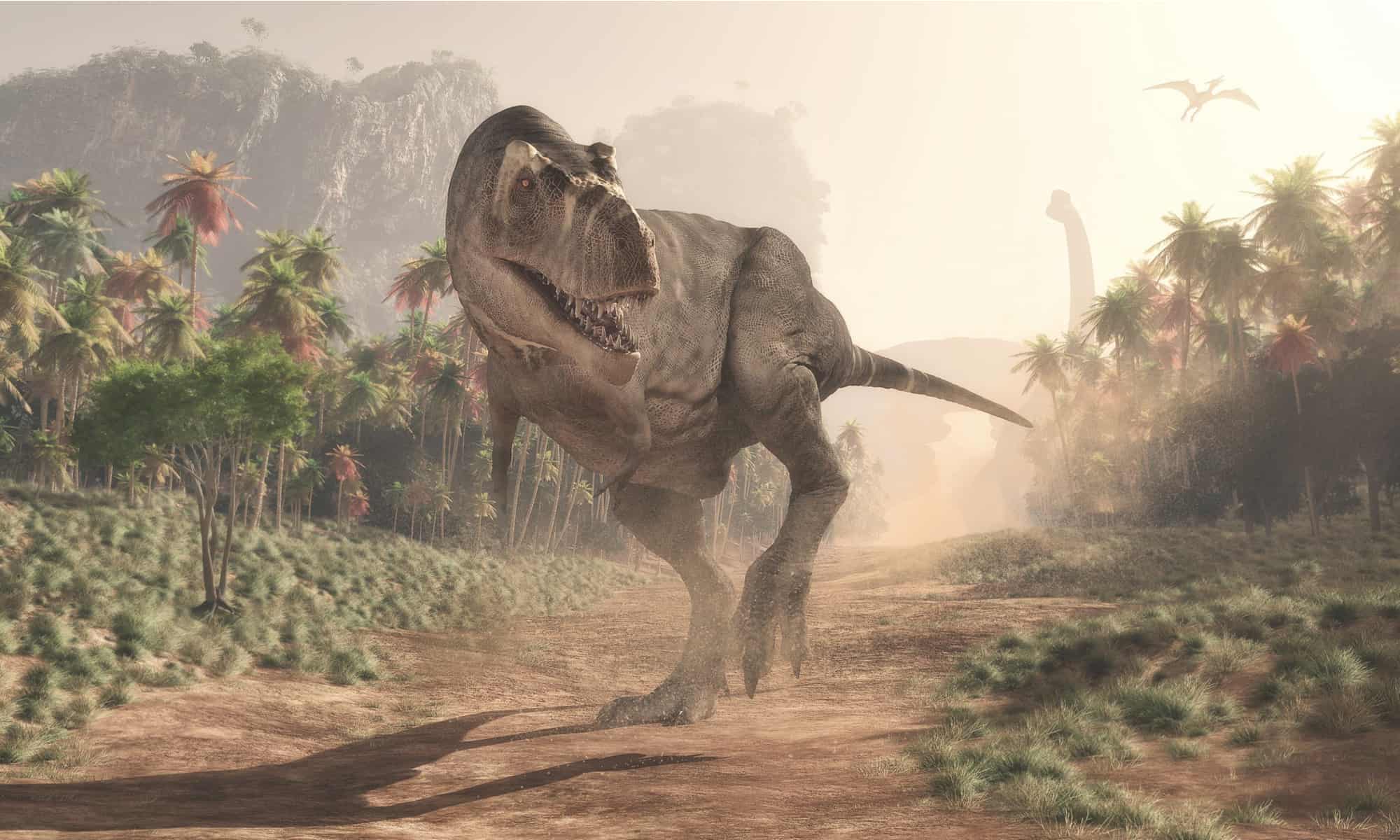Virginia’s geologic column dates from the Cambrian to the Quaternary periods. This information is important as experts can identify and attribute fossils to certain species or groups of dinosaurs, mainly with the help of a region’s geologic column.
Thanks to the column, we now know that at the start of the Paleozoic period the region where Virginia stands today was covered by a shallow sea. The latter was home to nautiloids, corals, bryozoans, and brachiopods — clearly, these are not dinosaurs.
Then, during the Ordovician period, the region became a landmass, only to drop under the water again during the Silurian period. Finally, during the mid- and late-Carboniferous, prehistoric Virginia turned into a swamp that was slowly covered by vegetation and eventually roamed by dinosaurs during the Triassic.
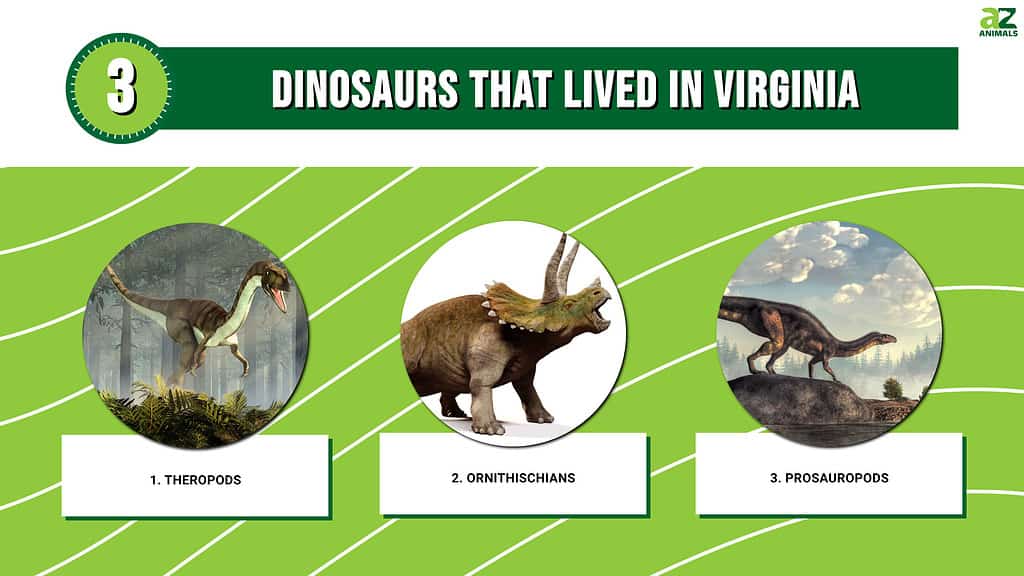
What Makes Virginia Interesting in Terms of Fossils?
Virginia is considered abundant in fossils, especially within the Midland Fish bed area that unfortunately got flooded in 1980. Before that, however, the region was one of the best sources of Virginia fish fossils.
It is also worth noting that Thomas Jefferson himself interacted with the world of American fossils, specifically with fossils discovered in Virginia. Back in 1782, a group of workers discovered large bones and teeth in a marsh. These fossils were then identified as elephant remains. They were, in fact, mammoth fossils, an aspect that Jefferson conferred with the Delaware Indians’ leaders in the state of Virginia.
What Is a Dinosaur?
Everybody knows what a dinosaur is, right? Well, the truth is that many creatures we think of as dinosaurs aren’t, in fact, dinosaurs. It all depends on nomenclature and generic definitions, to say the least. According to the official definition, dinosaurs are extinct animals that had upright limbs and lived specifically on the land about 252 million to 66 million years ago, during the Mesozoic Era. A dinosaur species is any species found in the Dinosauria clade.
Ultimately, you’ll discover that seemingly famous dinosaurs, such as pterodactyls, are not actually dinosaurs; they’re flying reptiles. However, taking into account different nomenclatures, one can identify two types of dinosaurs: avian dinosaurs (birds) and non-avian dinosaurs (all other dinosaurs except for birds).
We thought it was important to mention this as many sources suggest the Tanytrachelos is the only dinosaur whose fossils were found in Virginia. Tanytrachelos, however, is not part of the Dinosauria clade. Instead, it is part of the Protorosauria order, under the Reptilia class (most likely an ancestor of today’s crocodile).
Discover 3 Dinosaurs That Lived in Virginia
The most significant pieces of evidence of dinosaurs in Virginia were found in the Balls Bluff Sandstone area and the Cow Branch Formation. Both are attributed to ichnogenera dating back to the Late Triassic.
The Balls Bluff Sandstone area is considered one of the world’s best sources of Late Triassic fossils. In contrast, the Cow Branch Formation is considered to host the oldest dinosaur tracks throughout the eastern part of the United States.
Multiple ichnogenera (dinosaur artifacts) were discovered: Grallator, Atreipus, Kayentapus, Gregaripus, and Agrestipus. However, it can be difficult to talk about ichnogenera since these are basically the only pieces of evidence that can prove the existence of a certain species without any discovered fossils.
These ichnogenera belong to the following dinosaur groups: Theropoda (Grallator, Kayentapus), Ornithischia (Atreipus), and Prosauropoda (Agrestipus).
1. Theropods
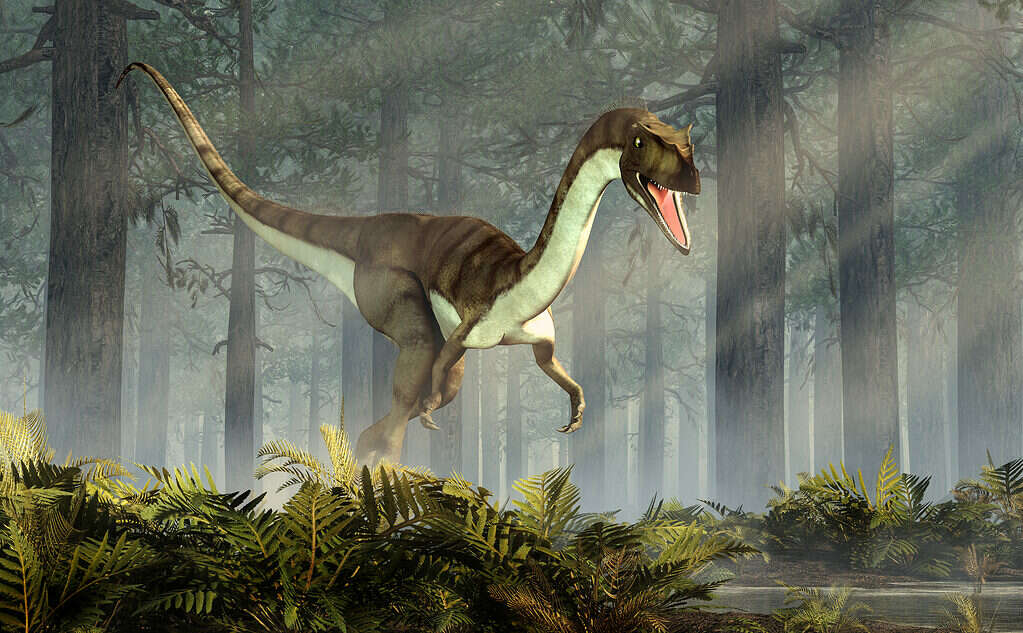
Theropods are part of the
Saurischia clade.
©Daniel Eskridge/Shutterstock.com
This clade’s distinctive features are the three toes and claws specimens have on each limb and the fact that they have hollow bones. Theropods are part of the Saurischia clade, which, according to terminology, is one of the two dinosaur divisions.
These dinosaurs roamed the Earth in the Late Triassic (about 231 million years ago), and they still do, in one form or another, as theoretically, dinosaurs are not completely extinct. More specifically, today’s birds evolved from theropods.
In terms of size, theropods were about 2.5 times taller than modern humans, as in the case of Spinosaurus aegyptiacus, the largest theropod. It was also the longest, measuring 49.2 feet (15 meters), while the shortest was Carcharodontosaurus saharicus at 39.3 feet (12 meters).
Do you want to hear an interesting fact? The bee hummingbird is the smallest known and currently living dinosaur part of the Theropoda clade.
2. Ornithischians
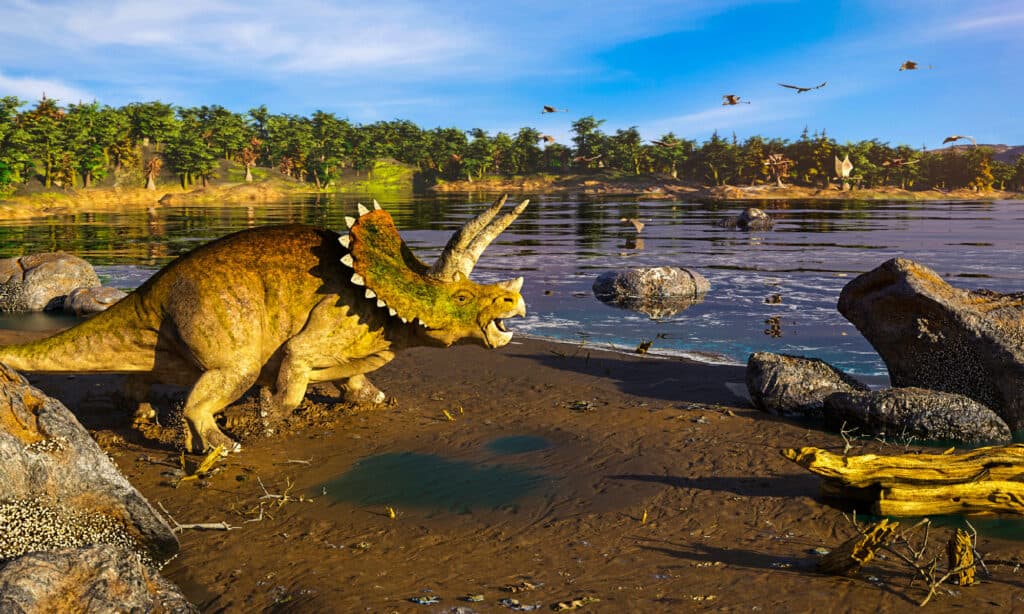
The order known as
Ornithischiaconsists of herbivorous dinosaurs including
Triceratops.
©iStock.com/dottedhippo
The order known as Ornithischia consists of herbivorous dinosaurs often identified by their specific pelvic structure. In short, it’s similar to that of extant birds. In fact, the scientific name translates as “bird-hipped.” Even though they are distant relatives of birds, ornithischians do not really have things in common with them when it comes to appearance.
For example, this order incorporates the famous Triceratops and Stegosaurus dinosaurs. Both, often depicted in dinosaur-related movies, do not look at all like birds. On the other hand, other groups of ornithischians shared a bit of their appearance with modern birds. Some were equipped with filamentous (meaning hairy or feather-like) pelts.
Ornithischians are an extremely interesting group of dinosaurs, especially if you look closely at their evolutionary history. According to research, these dinosaurs switched from bipedal to quadrupedal at least three times. Moreover, certain fossils suggest that some species within this order could switch their posture at will, depending on the scenario. Unlike theropods, the Ornithischia order is fully extinct.
3. Prosauropods
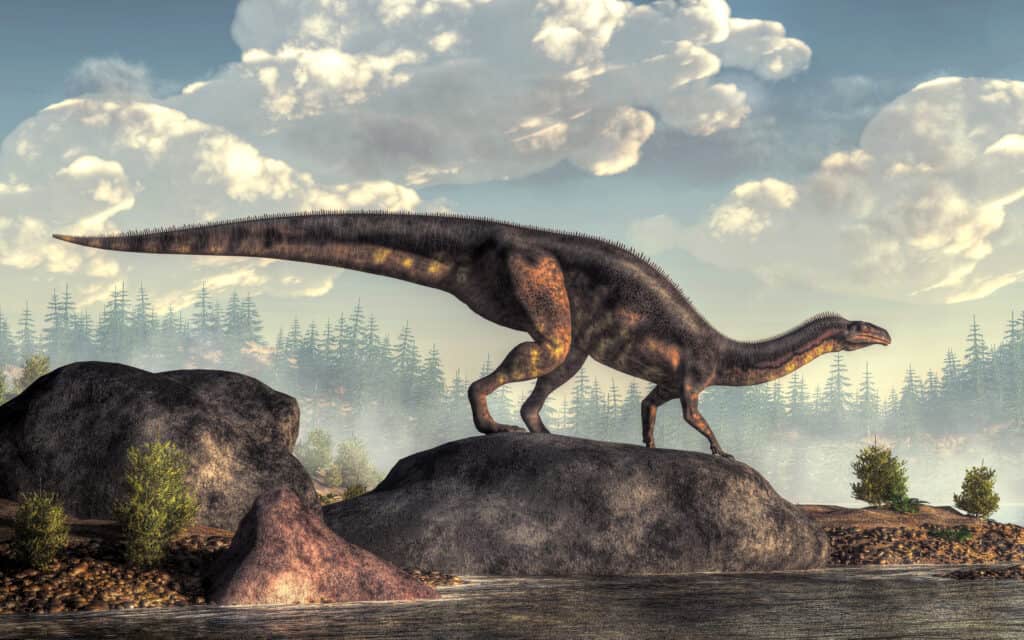
One member of the
Prosauropodafamily is
Plateosaurus.
©Daniel Eskridge/Shutterstock.com
Last but not least, we have the Prosauropoda family, contained in the Saurischia clade. The family is also called Plateosauridae or Sellosauridae. These dinosaurs roamed the Earth from the late Triassic to the early Jurassic, 225 million to 190 million years ago. Today, the family consists only of the following extinct members: Issi, Yimenosaurus, Euskelosaurus, and Plateosaurus.
The group was formed mainly of herbivorous dinosaurs that dominated the environment they were found in. These dinosaurs were large and could grow up to 20-33 feet (6-10 meters). Their small heads and long necks characterize them. Moreover, their forelimbs were shorter than their hindlimbs.
Where to See Fossils Today in Virginia
There are five natural history museums in Virginia where you can see fossils today. These are the Hostetter Museum of Natural History, the James Madison University Mineral Museum, the Museum of the Middle Appalachians, the Virginia Museum of Natural History, and the Virginia Tech Geosciences Museum.
All of the above allows you to see fossils during exhibits. Fossils from around the world or excavated from the Virginia area.
If you want to train to become a fossil hunter in the not-so-distant future, local hunters would recommend you visit Chippokes State Park, York River State Park, and Westmoreland State Park. Ironically enough, York River State Park hosts the famous Fossil Beach!
Reportedly, these places are abundant in fossils as they sit on ancient sea beds. Ancient sea beds represent the mother lode when it comes to fossils of all types.
What Is the State Fossil of Virginia?
The state fossil of Virginia is Chesapecten jeffersonius, an extinct scallop part of the Pectinida order. During the early Pliocene period, 5 million to 4 million years ago, these scallops populated the waters. They can be found mainly on the coastal plain of Virginia. Hence, the decision to make Chesapecten jeffersonius its state fossil.
Your fossil hunting career can begin with this cute little scallop. Its fossilized remnants are commonly found along southeastern Virginia’s major rivers.
Another interesting fact about this scallop is that it was the first fossil discovered in North America to be illustrated in scientific literature. Martin Lister, a naturalist and physician, was the one to publish a drawing of the scallop back in 1687.
You have the chance to see a rather large mollusk fossil collection (including the scallop in question) by visiting the Academy of Natural Sciences of Philadelphia. There sits the collection of John Finch, a geologist that donated the fossils in 1824.
Thank you for reading! Have some feedback for us? Contact the AZ Animals editorial team.

